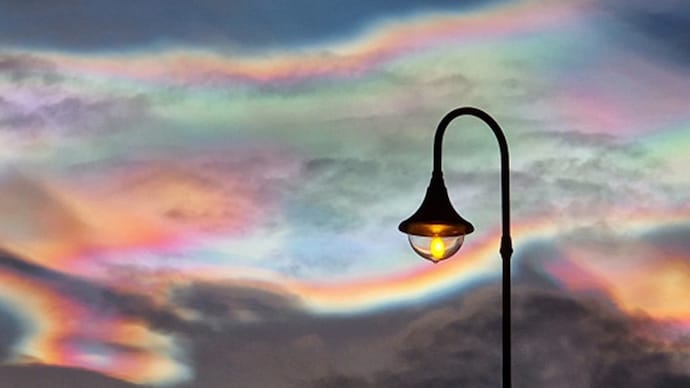For three consecutive days, residents of the Arctic have been mesmerized by an extraordinary display of otherworldly beauty swirling in the stratosphere above. These are not your average clouds, but Polar stratospheric clouds (PSCs), also known as nacreous clouds, and they are among the rarest and most stunning atmospheric phenomena on Earth.
Ramune Sapailaite, a resident of Gran, Norway, captured the captivating spectacle on camera, describing the clouds as present throughout the day, but their colors truly “exploded just before sunset.”
The Earth’s stratosphere, typically dry and devoid of moisture, is an unlikely canvas for cloud formation. However, the extreme cold of the Arctic winter, with temperatures plummeting to around -85°C, creates exceptional conditions. Under these frigid temperatures, sparse water vapor condenses into icy particles, setting the stage for a breathtaking visual symphony.
High-altitude sunlight interacts with these ice crystals, triggering a kaleidoscope of iridescent colors that dance across the sky, even when the sun dips below the horizon. This dazzling display often leaves onlookers awestruck, and this week’s sightings are particularly remarkable due to their unusual timing.
PSCs usually first appear in January, but their early arrival in December hints at an atypically cold Arctic winter. More than just a visual treat, the frequency of these clouds is a red flag for scientists monitoring the health of our planet’s atmosphere.
PSCs act as a platform for complex chemical reactions in the stratosphere. On these icy surfaces, benign forms of chlorine are transformed into potent ozone-destroying forms. Additionally, PSCs can strip away nitrogen compounds, which normally help mitigate the harmful effects of chlorine on the ozone layer.
The occurrence of PSCs, while captivating for skygazers, is a cause for concern for scientists studying the delicate balance of our atmosphere. As these clouds become more frequent in the Arctic, they signal a changing stratosphere, potentially leading to long-term consequences for the ozone layer and global climate.
The recent display of nacreous clouds serves as a captivating reminder of the Arctic’s raw beauty and the intricate dance of natural forces that orchestrates such mesmerizing spectacles. While their iridescent glow may be fleeting, the awe they inspire and the vital information they offer scientists leave a lasting impression, urging us to appreciate and protect the delicate balance of our planet’s atmosphere.
